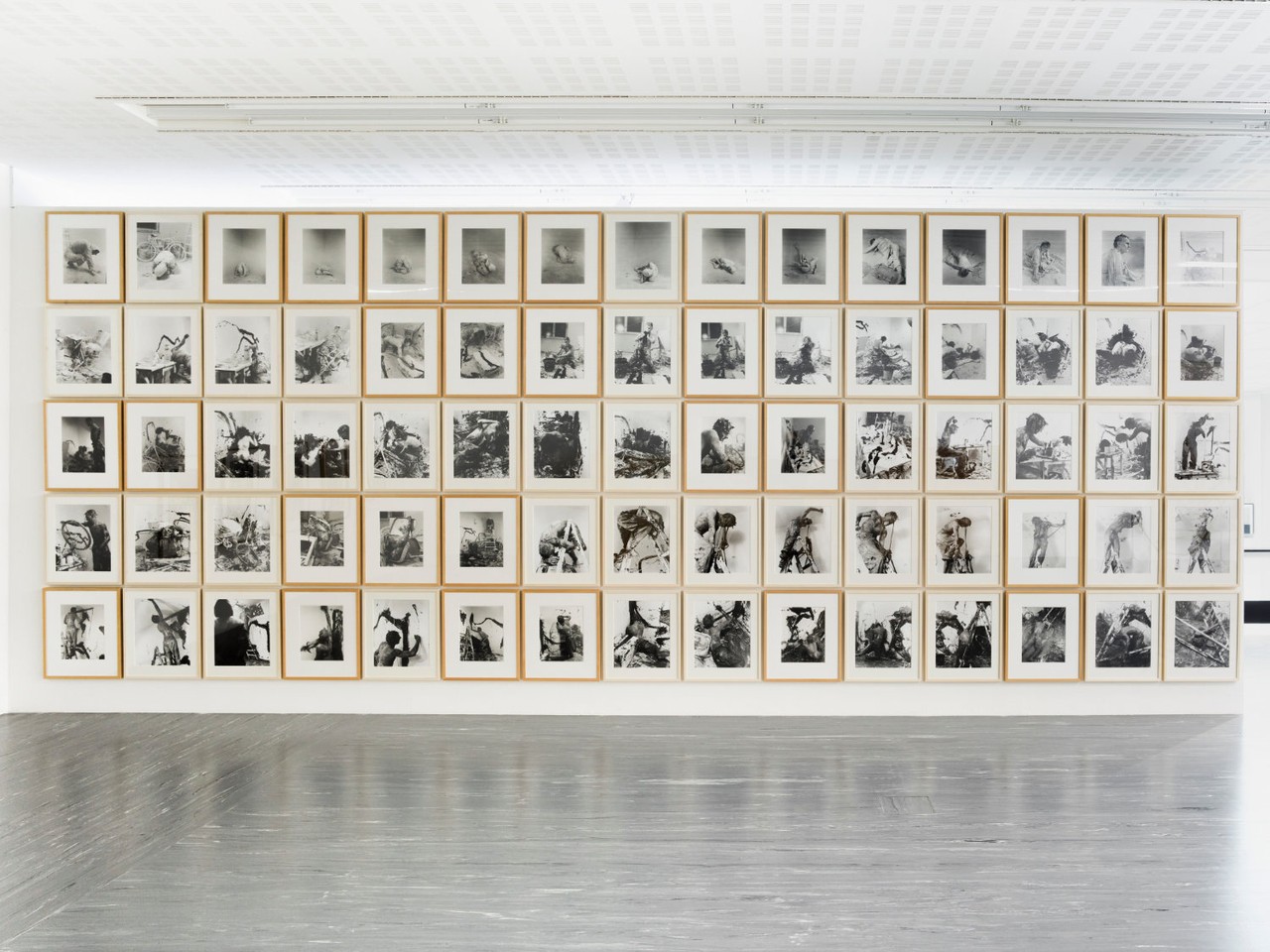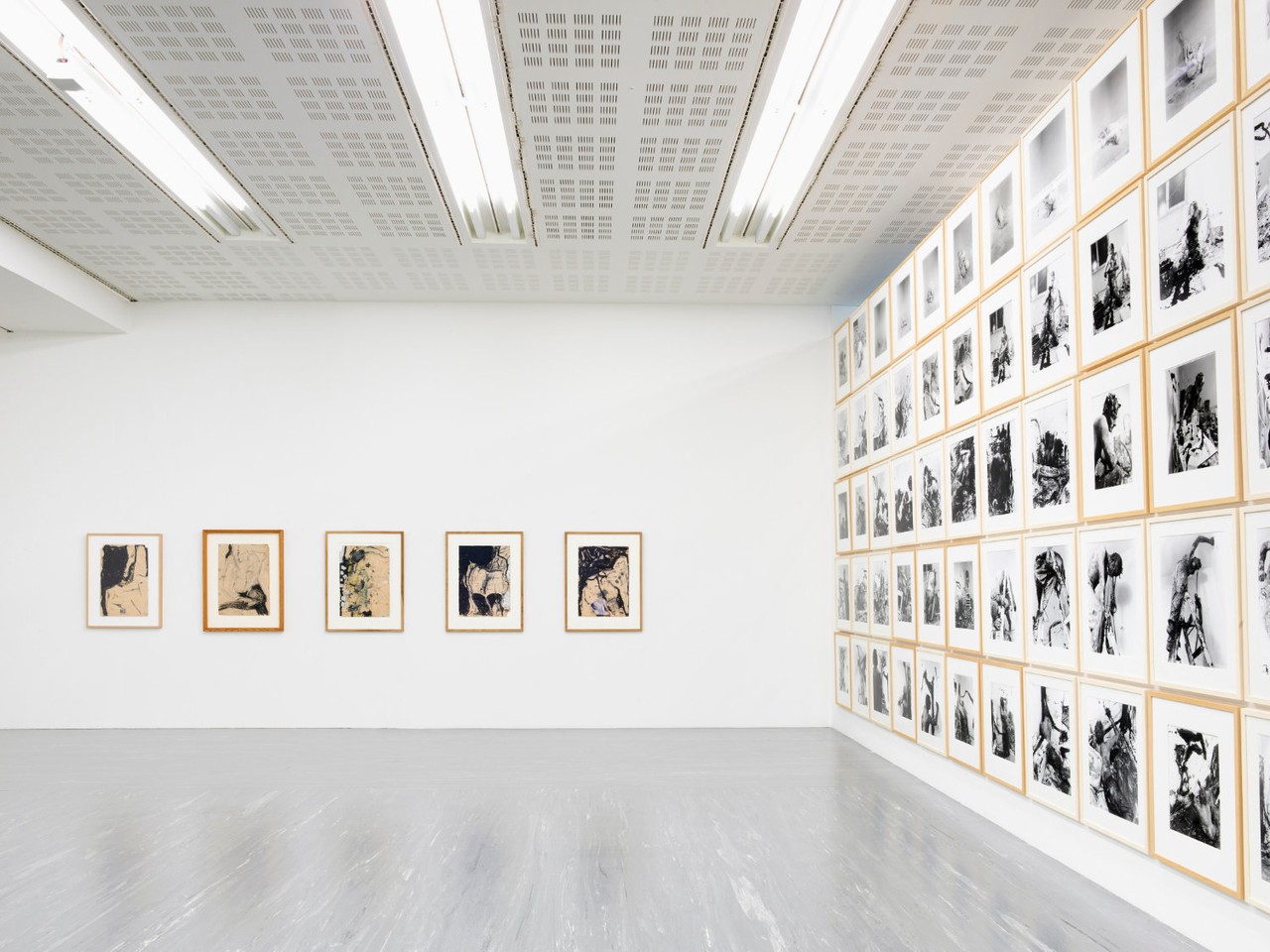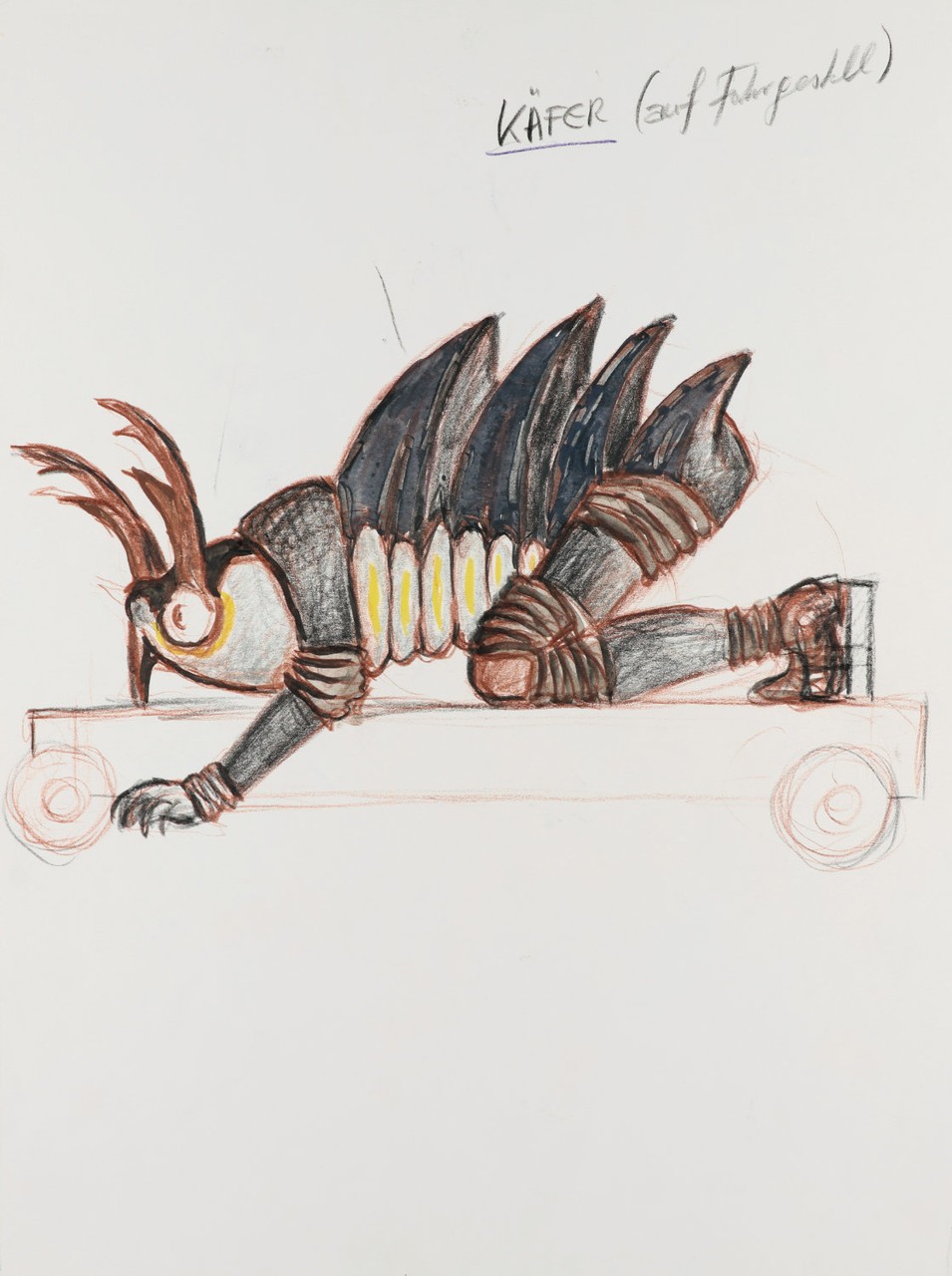Günter Brus
Unrest after the Storm
02 Feb - 12 Aug 2018
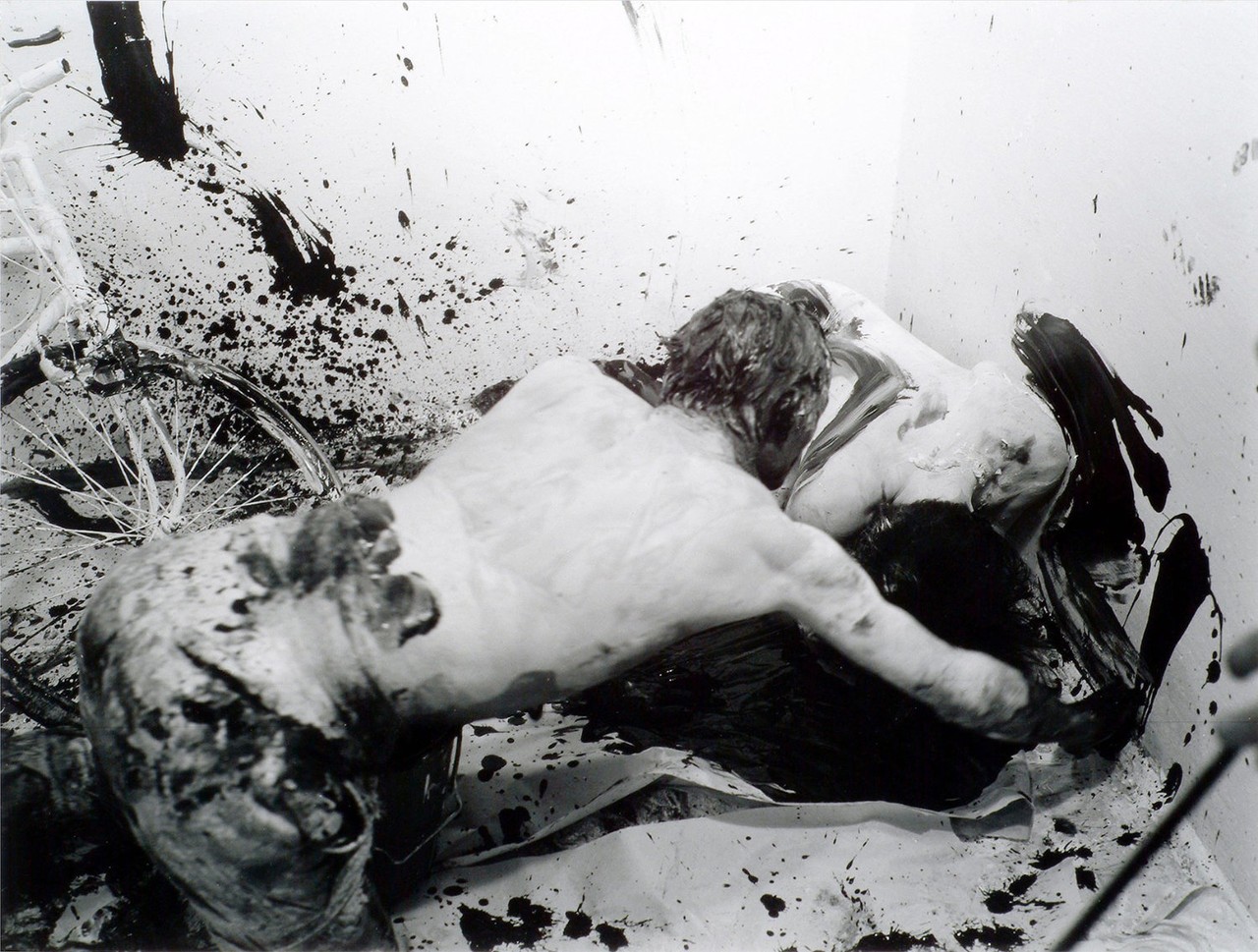
Günter Brus, Portfolio Ana IV, 1964/2004, with Anna Brus
Photo: Khasaq (Siegfried Klein), © Belvedere, Vienna
Photo: Khasaq (Siegfried Klein), © Belvedere, Vienna

Günter Brus,Portfolio Ana IV, 1964/2004
Photo: Khasaq (Siegfried Klein), © Belvedere, Vienna (Photo: Johannes Stoll)
with Anna Brus
Photo: Khasaq (Siegfried Klein), © Belvedere, Vienna (Photo: Johannes Stoll)
with Anna Brus
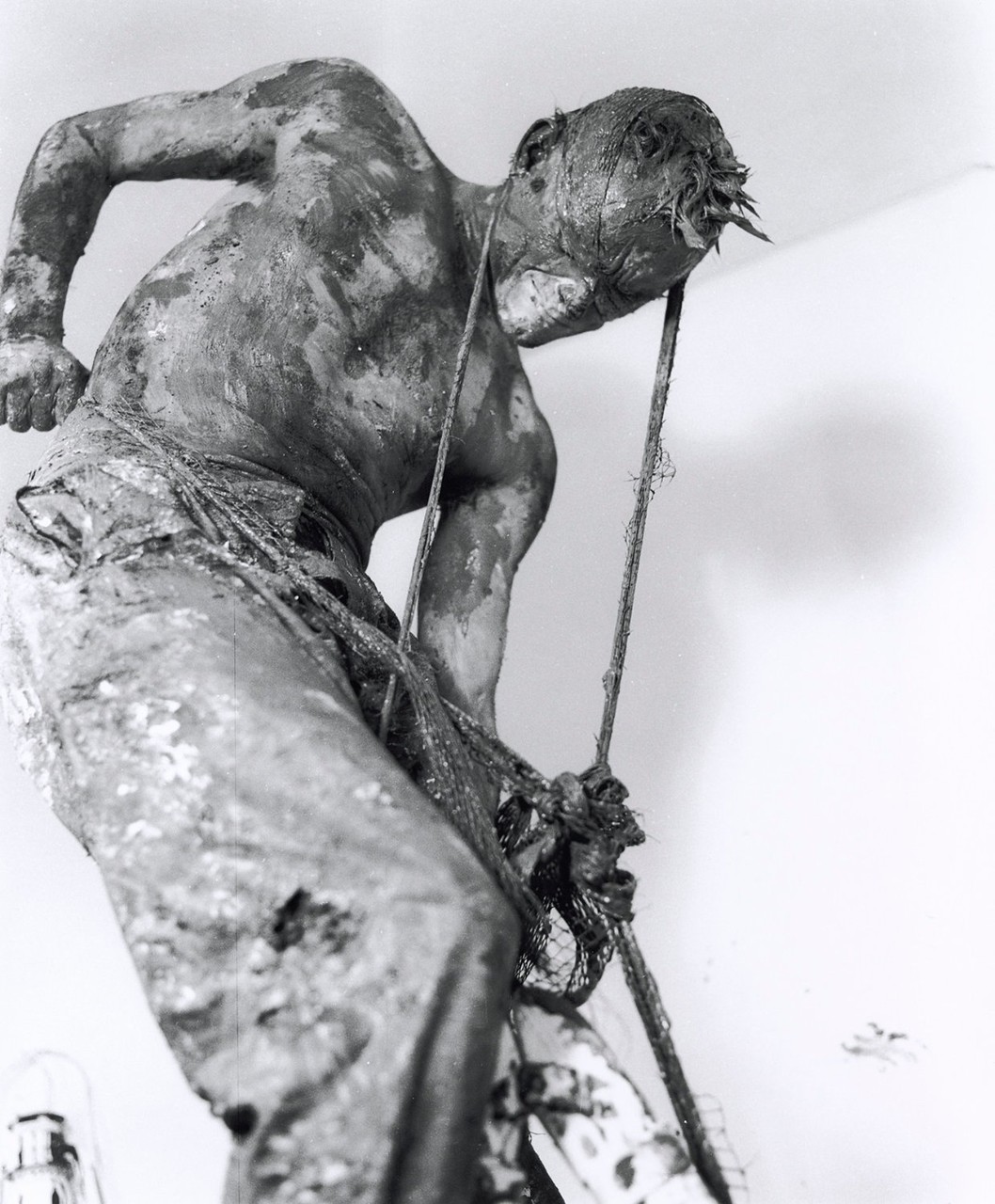
Günter Brus, Portfolio Ana IV, 1964/2004
Photo: Khasaq (Siegfried Klein), © Belvedere, Vienna (Photo: Johannes Stoll)
with Anna Brus
Photo: Khasaq (Siegfried Klein), © Belvedere, Vienna (Photo: Johannes Stoll)
with Anna Brus
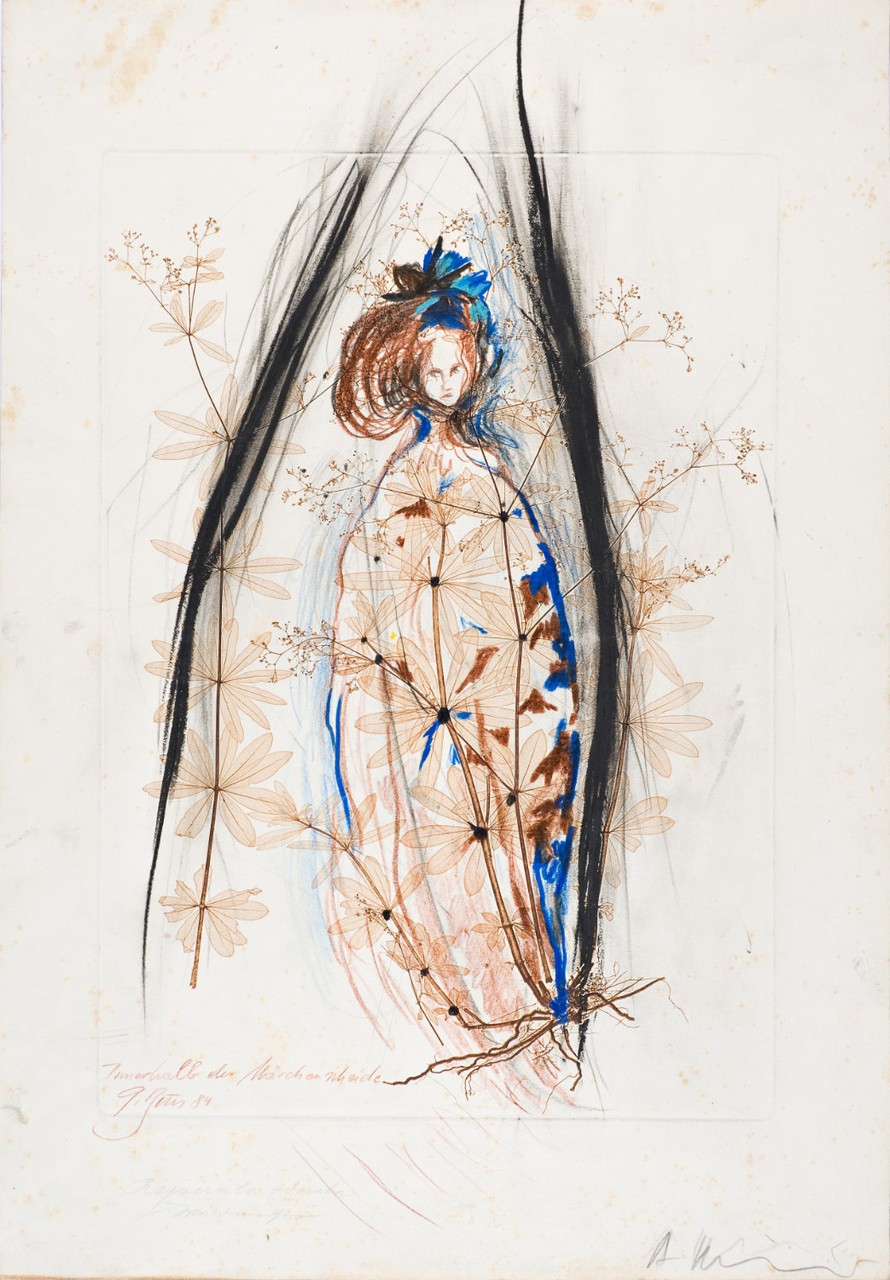
Günter Brus and Arnulf Rainer, Pflanzenbilder - Innerhalb der Märchenscheide, 1984
Photo: N./Lackner, © Joanneum. Archive Brus
Photo: N./Lackner, © Joanneum. Archive Brus
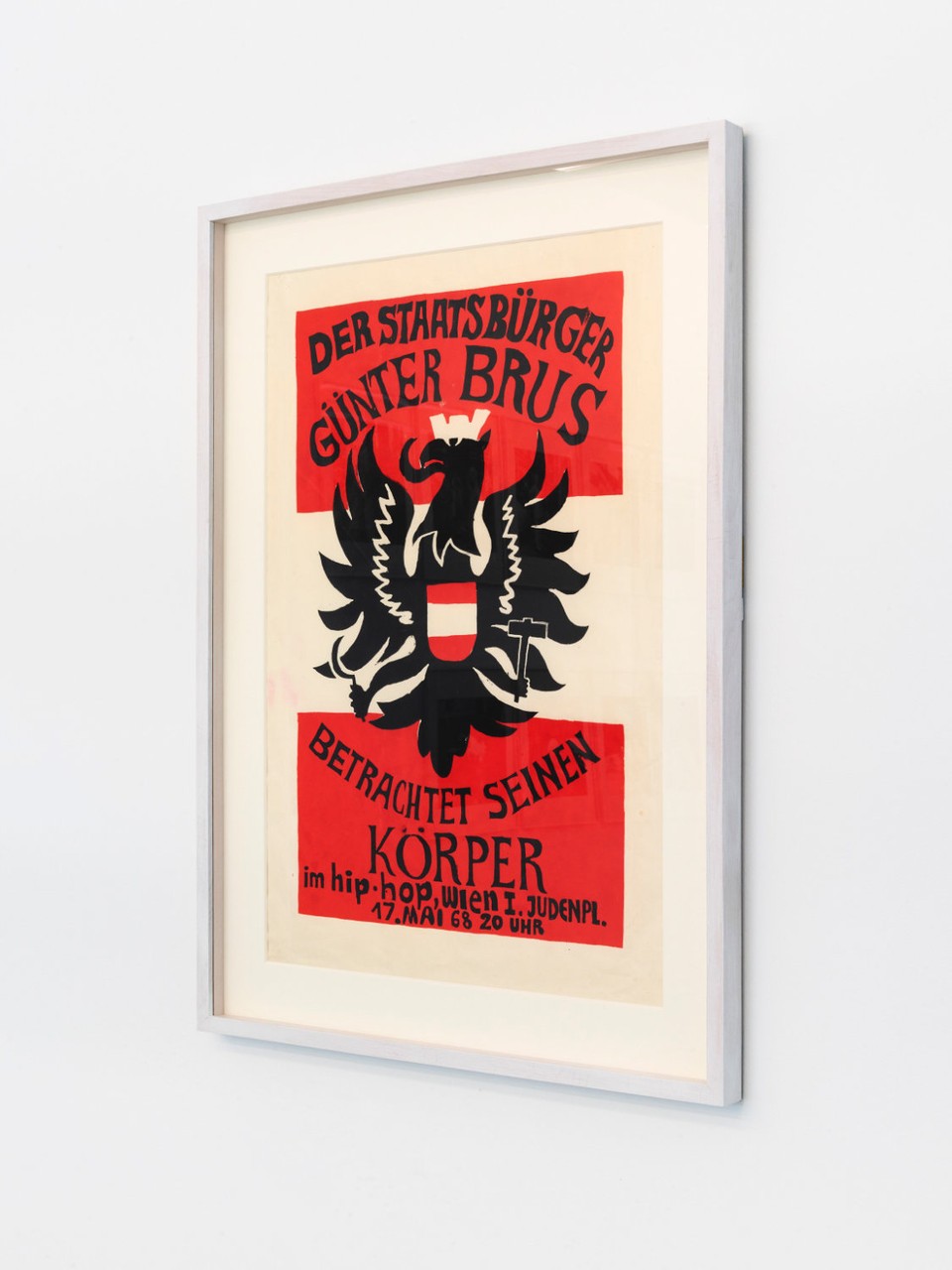
Günter Brus, Der Staatsbürger Günter Brus betrachtet seinen Körper, 1968
Photo: Sophie Thun, © Belvedere, Vienna, 2018
Photo: Sophie Thun, © Belvedere, Vienna, 2018
GÜNTER BRUS
Unrest after the Storm
2 February – 12 August 2018
To mark the artist’s 80th birthday, Belvedere 21 is dedicating a comprehensive retrospective to
the oeuvre of Günter Brus.
Günter Brus is now considered one of Austria ́s most important international artists. As a
representative of Viennese Action Art, during the 1960s he shone a light on the powerful
presence of the physical and psychological constitution of man and the oppression of the
individual to social rules. With his radical, body-based and performative work, he succeeded in
detaching himself from the ‘brand‘ of Viennese Action Art and has since gone down in history as
the fundamental pioneer of international action and performance art. In 1970, Günter Brus turned
his back on Action Art and focused increasingly on the medium of drawing, with ‘image poems’
and theater works.
A particular highlight of the retrospective is the comprehensive presentation of selected series
of works. Alongside the familiar action photos, supplemented by material that has rarely been
exhibited until now, Brus’s serial drawings and ‘image poems,‘ including the 160-part cycle
Leuchtstoffpoesie und Zeichenchirurgie (Luminescence Poetry and Drawing Surgery), will be
shown in their entirety. A total of around 120 different work cycles and works that altogether
total more than 700 individual objects can be seen in the exhibition, including films and
previously unknown series of works.
The major Günter Brus retrospective at Belvedere 21 closely addresses six themes: painting in
an extended field, Günter and Anna Brus, image and narrative, collaborations, theater and
psyche, and the Berlin period.
PAINTING IN AN EXTENDED FIELD
In 1960, Günter Brus began working with a radical, gestural form of painting. In his efforts to
break away from classic panel painting, he created ‘spatial images‘ in which the formal
boundaries of the canvas no longer played a role. His later performances and actions can be
seen as further developments of informal painting. In his first performance, Ana, in 1964, his own
body was at the center of the artistic confrontation. Brus consistently expanded the work
process and imbued his actions and performances with further levels of meaning. If the body is
initially still a medium for the painting process, then later it becomes a membrane and a
metaphor of social processes, and thus too a surface for the projection of his social critique.
With his final action Zerreißprobe (Ordeal) in 1970, which clarified the artist’s radically expanded
concept of painting with and on his body, Günter Brus played a major part in shaping the history
of performance art.
THE BERLIN PERIOD
As a result of his participation in the collective action Kunst und Revolution at the University of
Vienna, which went down in the history of Viennese Action Art as a so-called ‘Uniferkelei,‘ or
“dirty university prank,” Günter Brus was taken to court and, facing a severe sentence, fled to
Berlin. In the exhibition, Berlin is considered the starting point for his new approach to art and
his preoccupation with theater and literature. He developed ‘image poems‘, which resulted in
entire pictorial cycles. One example is the cycle Franz Schreker. Die Gezeichneten, (Franz
Schreker. The Branded), which is shown in its entirety. Collaborating with other Austrian artists
like H.C. Artmann, Oswald Wiener and Gerhard Rühm, Günter Brus worked on various art
projects while in exile in Berlin. He published works by his artist friends in the artists’ magazine
Die Schastrommel. During those years, he also attempted to gain a financial foothold through
theater projects. It was also in Berlin that Selten gehörte Musik (Rarely Heard Music) developed,
which visitors will be able to listen to at Belvedere 21.
IMAGE AND NARRATIVE
With his last action, entitled Zerreißprobe, in 1970 Günter Brus turned his back on Action Art in
favor of literary-creative works. In 1971, he published his first novel Irrwisch (Flibbertigibet),
which he underpinned with drawings. From this, new combinations of literature and pictorial art
were to develop. The genre of ‘image poems‘ that Brus created lies somewhere between the
twin poles of concept and image. Pictorial and linguistic symbols transition smoothly into and
complement one another. The texts – from aphorisms to narratives and language games – come
primarily from Brus himself. In 1998, Günter Brus created Leuchtstoffpoesie und
Zeichenchirurgie, which brings together closed narratives, slivers of text, drawings and image
poems in one eclectic web of relationships.
THEATER AND PSYCHE
Since the 1970s the artist has taken on theater as a representative art form, developing plays for
the stage that go beyond his image-poem cycles. In the tradition of ancient theater, he designs
stage sets, costumes and the play’s content and brings these to life with grotesque, humorous
and playful-fantastical elements. Hence, having concentrated on his own body in space, Günter
Brus now develops a powerfully pictorial and complete composition for the stage. As in his
image poems and texts, for his stage plays too, the expressive, symbolic-allegorical language
and the abstract, free means of representation are definitive. His first complete work is the
tragedy Der Frackzwang (Tailcoats Only). In his staging of the play Erinnerungen an die
Menschheit (Memories of Humanity), based on a text by Gerhard Roth, he strings together loose
scenes and thus breaks apart the classic form of dramatization. Brus also designed the
costumes for The Cunning Little Vixen, an opera by Czech composer Leoš Janáček.
GÜNTER AND ANNA BRUS
The exhibition places a particular focus on Günter Brus’s collaboration with his wife Anna, from
whom his first performance takes its name. Anna Brus’s part in the development of the actions is
highlighted here. Unlike his fellow campaigners Mühl or Nitsch, who were constrained by
machismo in their works and their dealings with their models, Günter Brus has always
collaborated with his wife. Anna Brus earned a living for her family and in her spare time helped
out with the actions – a family situation that was very unusual in the early 1970s. The extent to
which this form of partnership was a conscious decision underpinned by an emancipatory
attitude remains unclear. The fact is that Günter Brus deals with the subject of gender roles time
and again, and in doing so questions stereotypes and roles.
COLLABORATIONS
Günter Brus continually seeks to involve and include fellow artists as well as his audience. The
works that developed as collaborations with other artists are presented in a particular form in
the exhibition. A room within the retrospective is to hold changing exhibits throughout the
duration of the exhibition. It will show collaborations with artist colleagues such as Arnulf
Rainer, Jörg Schlick and Dominik Steiger, as well as a spatial installation by the young artist
Sophia Süßmilch created especially for the exhibition.
Unrest after the Storm
2 February – 12 August 2018
To mark the artist’s 80th birthday, Belvedere 21 is dedicating a comprehensive retrospective to
the oeuvre of Günter Brus.
Günter Brus is now considered one of Austria ́s most important international artists. As a
representative of Viennese Action Art, during the 1960s he shone a light on the powerful
presence of the physical and psychological constitution of man and the oppression of the
individual to social rules. With his radical, body-based and performative work, he succeeded in
detaching himself from the ‘brand‘ of Viennese Action Art and has since gone down in history as
the fundamental pioneer of international action and performance art. In 1970, Günter Brus turned
his back on Action Art and focused increasingly on the medium of drawing, with ‘image poems’
and theater works.
A particular highlight of the retrospective is the comprehensive presentation of selected series
of works. Alongside the familiar action photos, supplemented by material that has rarely been
exhibited until now, Brus’s serial drawings and ‘image poems,‘ including the 160-part cycle
Leuchtstoffpoesie und Zeichenchirurgie (Luminescence Poetry and Drawing Surgery), will be
shown in their entirety. A total of around 120 different work cycles and works that altogether
total more than 700 individual objects can be seen in the exhibition, including films and
previously unknown series of works.
The major Günter Brus retrospective at Belvedere 21 closely addresses six themes: painting in
an extended field, Günter and Anna Brus, image and narrative, collaborations, theater and
psyche, and the Berlin period.
PAINTING IN AN EXTENDED FIELD
In 1960, Günter Brus began working with a radical, gestural form of painting. In his efforts to
break away from classic panel painting, he created ‘spatial images‘ in which the formal
boundaries of the canvas no longer played a role. His later performances and actions can be
seen as further developments of informal painting. In his first performance, Ana, in 1964, his own
body was at the center of the artistic confrontation. Brus consistently expanded the work
process and imbued his actions and performances with further levels of meaning. If the body is
initially still a medium for the painting process, then later it becomes a membrane and a
metaphor of social processes, and thus too a surface for the projection of his social critique.
With his final action Zerreißprobe (Ordeal) in 1970, which clarified the artist’s radically expanded
concept of painting with and on his body, Günter Brus played a major part in shaping the history
of performance art.
THE BERLIN PERIOD
As a result of his participation in the collective action Kunst und Revolution at the University of
Vienna, which went down in the history of Viennese Action Art as a so-called ‘Uniferkelei,‘ or
“dirty university prank,” Günter Brus was taken to court and, facing a severe sentence, fled to
Berlin. In the exhibition, Berlin is considered the starting point for his new approach to art and
his preoccupation with theater and literature. He developed ‘image poems‘, which resulted in
entire pictorial cycles. One example is the cycle Franz Schreker. Die Gezeichneten, (Franz
Schreker. The Branded), which is shown in its entirety. Collaborating with other Austrian artists
like H.C. Artmann, Oswald Wiener and Gerhard Rühm, Günter Brus worked on various art
projects while in exile in Berlin. He published works by his artist friends in the artists’ magazine
Die Schastrommel. During those years, he also attempted to gain a financial foothold through
theater projects. It was also in Berlin that Selten gehörte Musik (Rarely Heard Music) developed,
which visitors will be able to listen to at Belvedere 21.
IMAGE AND NARRATIVE
With his last action, entitled Zerreißprobe, in 1970 Günter Brus turned his back on Action Art in
favor of literary-creative works. In 1971, he published his first novel Irrwisch (Flibbertigibet),
which he underpinned with drawings. From this, new combinations of literature and pictorial art
were to develop. The genre of ‘image poems‘ that Brus created lies somewhere between the
twin poles of concept and image. Pictorial and linguistic symbols transition smoothly into and
complement one another. The texts – from aphorisms to narratives and language games – come
primarily from Brus himself. In 1998, Günter Brus created Leuchtstoffpoesie und
Zeichenchirurgie, which brings together closed narratives, slivers of text, drawings and image
poems in one eclectic web of relationships.
THEATER AND PSYCHE
Since the 1970s the artist has taken on theater as a representative art form, developing plays for
the stage that go beyond his image-poem cycles. In the tradition of ancient theater, he designs
stage sets, costumes and the play’s content and brings these to life with grotesque, humorous
and playful-fantastical elements. Hence, having concentrated on his own body in space, Günter
Brus now develops a powerfully pictorial and complete composition for the stage. As in his
image poems and texts, for his stage plays too, the expressive, symbolic-allegorical language
and the abstract, free means of representation are definitive. His first complete work is the
tragedy Der Frackzwang (Tailcoats Only). In his staging of the play Erinnerungen an die
Menschheit (Memories of Humanity), based on a text by Gerhard Roth, he strings together loose
scenes and thus breaks apart the classic form of dramatization. Brus also designed the
costumes for The Cunning Little Vixen, an opera by Czech composer Leoš Janáček.
GÜNTER AND ANNA BRUS
The exhibition places a particular focus on Günter Brus’s collaboration with his wife Anna, from
whom his first performance takes its name. Anna Brus’s part in the development of the actions is
highlighted here. Unlike his fellow campaigners Mühl or Nitsch, who were constrained by
machismo in their works and their dealings with their models, Günter Brus has always
collaborated with his wife. Anna Brus earned a living for her family and in her spare time helped
out with the actions – a family situation that was very unusual in the early 1970s. The extent to
which this form of partnership was a conscious decision underpinned by an emancipatory
attitude remains unclear. The fact is that Günter Brus deals with the subject of gender roles time
and again, and in doing so questions stereotypes and roles.
COLLABORATIONS
Günter Brus continually seeks to involve and include fellow artists as well as his audience. The
works that developed as collaborations with other artists are presented in a particular form in
the exhibition. A room within the retrospective is to hold changing exhibits throughout the
duration of the exhibition. It will show collaborations with artist colleagues such as Arnulf
Rainer, Jörg Schlick and Dominik Steiger, as well as a spatial installation by the young artist
Sophia Süßmilch created especially for the exhibition.


